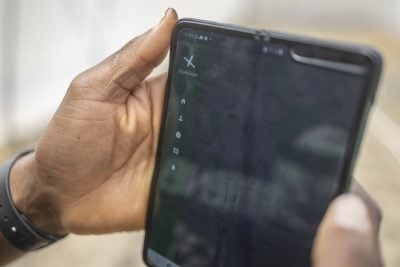There has been great fanfare in recent years every time a new intercontinental subsea fibre optic cable has been completed between Africa and the rest of the world but with a handful of exceptions, the much-vaunted broadband revolution is still largely confined to coastal cities with easy access to the cables.
Many commentators claim that the sector has therefore failed, but it was always going to take some time to secure the finance required to develop national backbones and then connect individual homes and businesses to networks via fibre-to-the-home (FTTH) projects. The first cable reached sub-Saharan shores in 2009 and there are now 14 of them, bringing far more digital capacity than the continent can currently utilise.
Last year saw 19 more African countries announce plans to develop domestic backbones, which will mean that almost every African country will be connected to at least one of the subsea cables, helping to boost their mobile telecoms capacity and also with the intention of providing high-speed broadband access to consumers. The pace of last mile uptake has increased this year.
The most active backbone contractors are Huawei, Alcatel-Lucent and China Telecom and once all these backbones are in place, there should be a big rise in the pace of urban fibre network development. The industry as a whole should not be too pessimistic.
It was always going to take some time for the benefits of extra bandwidth to filter through to individuals. Yet there is little doubt that progress has been slower than many assumed and significantly slower away from coastal cities.
The main cause of this appears to be the high cost of financing the last mile of fibre, even in densely populated, prosperous urban areas. Away from major cities and coastal towns, there is a real possibility that mobile technology will advance before fibre networks are even developed and the technology is superseded.
As might be expected, South Africa is attracting the most investment and a number of programmes are already underway: in Johannesburg, Durban, Cape Town and Tshwane. Work began on connecting wealthy suburbs in Cape Town last year and the City of Johannesburg had signed a public-private partnership deal with Ericsson to build a city-wide network but this was cancelled last year and development is now entirely in state hands.
Beyond South Africa, Liquid Telecom has been particularly active. It is developing FTTH services in Kilifi on the Kenyan coast, north of Mombasa, as well as in Nairobi; in Kigali; and at Victoria Falls in Zimbabwe. Also in Zimbabwe, TelOne has connected selected parts of Harare, while CEC Liquid Telecom is rolling out a network in Lusaka.
There have been some unexpected investors and investment models. Ivoire IP is providing FTTH via franchises in Abidjan, while Google is backing Project Link to provide fibre networks in two areas: Kampala in Uganda, and Accra, Tema and Kumasi in Ghana.
This capacity has enabled the development of several large-scale public wifi initiatives in South Africa and Kenya in particular. In addition, Netflix, Naspers, Vodacom, Telkom, and MTN all announced last year that they would launch Video on Demand services in South Africa, while Harare has already benefitted. The success of such ventures would increase pressure on other governments to encourage development in their countries.
South African manufacturing
Yangtze Optics Africa Cable (YOAC), which is mainly owned by Chinese interests, and local partner Mustek will open an optical fibre cable manufacturing plant in South Africa in January. Developed at Dube TradePort outside Durban at a cost of R250m ($17.9m), the factory will supply cable to companies, the public sector and network operators.
YOAC believes that the speed of network development will pick up over the next few years as consumers demand the faster connections that fibre-optics provide over copper. Vodacom has pledged to speed up the roll-out of its FTTH strategy in South Africa and has set a target of securing 1m customers within four years.
It already leases capacity from a range of wholesale fibre providers, including Dark Fibre Africa, Fibrehoods, Openserve and Vumatel, and will add Century City Connect to this list in the near future. Vodacom’s managing executive for fibre roll-out, Louisa van Beek, said: “In order to accelerate access to fibre services for our customers, we have partnered with third party FTTH infrastructure providers for access to ready built FTTH networks … The rollout of fibre remains a critical part of Vodacom’s growth strategy.
“We anticipate significant growth in this area and besides investing significantly in our own infrastructure we will also continue to sign up additional third party network infrastructure providers.” In September, Vodacom signed a deal with the Passenger Rail Agency of SA (Prasa) to provide customers with free access to wifi on Prasa services. Vodacom is to lease the company’s 900km of fibre optic lines along railway lines over the course of the 15-year contract.
This came within a week of Vodacom securing a R5bn contract to supply mobile data and voice services to 1.3m civil servants over the next four years, cementing its position as a big player in South African telecoms. Vodacom Business’s CEO, Vuyani Jarana, said the local economy was “quickly digitising, the demand for high-speed broadband is increasing daily and optic fibre network deployments are crucial in the delivery of high-speed broadband services […] At Vodacom we have long believed in the strategic role to be played by partnerships and alliances to optimise existing ICT asset utilisation in South Africa.”
The eternal problem of uncertain land ownership continues to affect network development. In September, Lagos State Infrastructure Maintenance and Regulatory Agency (LASIMRA) reported that operators had failed to remove fibre optic cables when warned that they had laid them illegally, including in gutters and on trees, particularly on Victoria Island in Lagos. LASIMRA general manager Babajide Odekunle said that roads had even been dug up to lay cables and not subsequently repaired.
Neil Ford
Want to continue reading? Subscribe today.
You've read all your free articles for this month! Subscribe now to enjoy full access to our content.
Digital Monthly
£8.00 / month
Receive full unlimited access to our articles, opinions, podcasts and more.
Digital Yearly
£70.00 / year
Our best value offer - save £26 and gain access to all of our digital content for an entire year!
 Sign in with Google
Sign in with Google 


